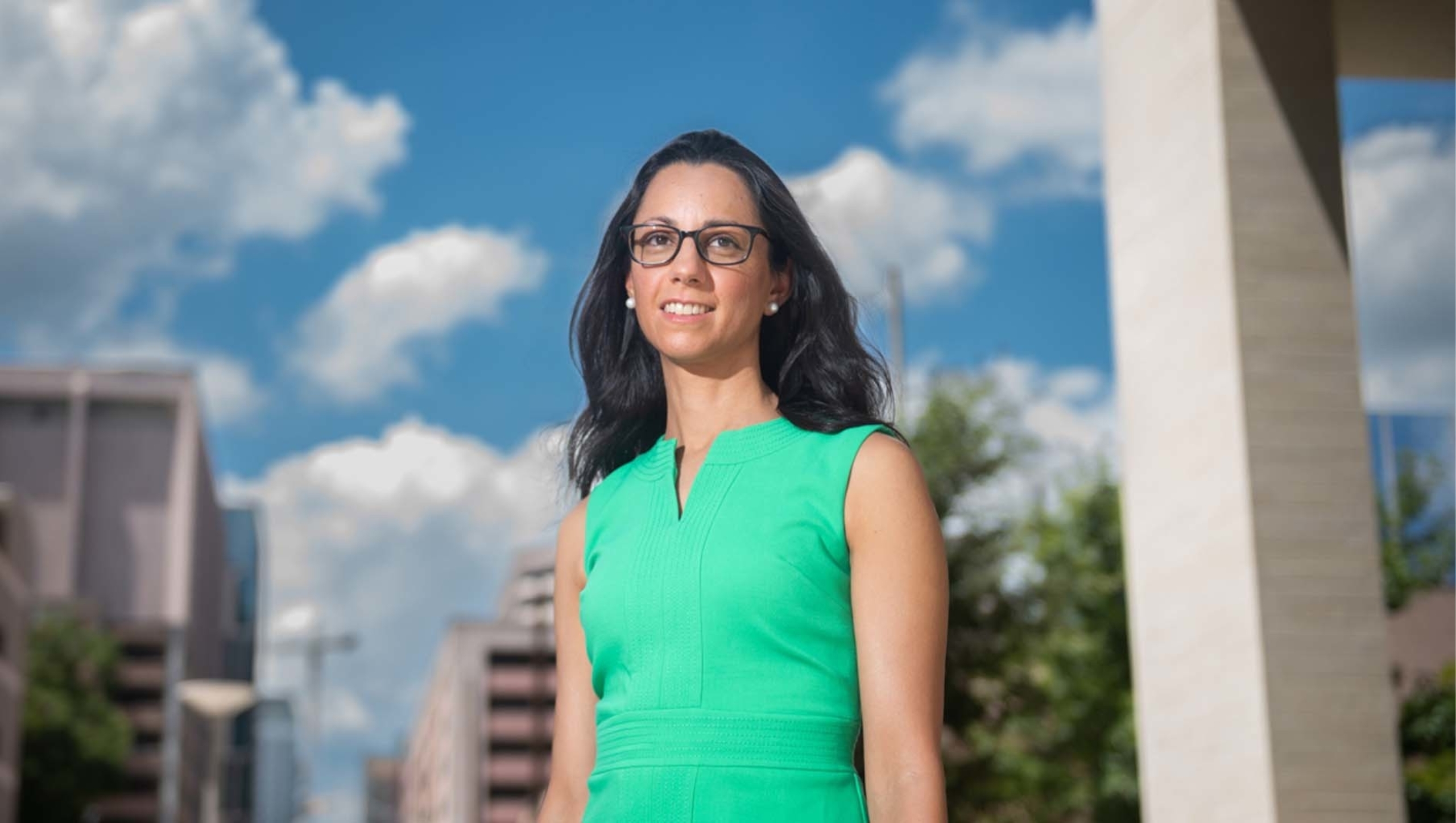Black and Hispanic/Latinx children were more prone to exposure and infection of COVID-19 during the height of the pandemic. The differences aren’t genetic — so what was the cause?
The answer could be contextual factors. Darlene Bhavnani, Ph.D., MPH, an assistant professor in Dell Med’s Department of Population Health, intends to investigate social and environmental determinants of disease.

Darlene Bhavnani, Ph.D., MPH
An emerging leader in health equity research and a 2022 Mentored Research Career Development Program scholar at UT Health San Antonio, Bhavnani is using her platform to understand causal relationships that underlie health disparities. Her ultimate goal is to inform sustainable, culture-specific public health interventions to reduce these disparities.
What problem are you hoping to solve, and how did you become aware of it?
I’m currently focused on children with asthma. Mexican American and Black children with asthma are twice as likely to visit the emergency department and four times as likely to die as compared to white children with asthma. Asthma exacerbation is strongly linked to upper respiratory infection in all children. The question I am trying to address is whether viruses contribute to these racial and ethnic disparities and, specifically, how.
As the former chief epidemiologist of UT’s COVID-19 contact tracing effort, I observed striking racial and ethnic disparities in SARS-CoV-2 infection. Further studies found that Black and Hispanic/Latinx communities across the U.S. were more likely to be exposed to COVID-19 and have severe outcomes resulting from infection than other communities. Notably, there is no evidence that these differences are genetically determined.
This observation combined with mentorship from Elizabeth Matsui, M.D., a nationally recognized expert in pediatric allergy and immunology, led me to question whether the same factors that led to racial and ethnic COVID-19 disparities also lead to disparities in asthma exacerbations, which are tightly linked to other upper respiratory viral infections.
What needs to happen to change this in Austin? The U.S.? The world?
To design effective interventions to improve health outcomes, we must first understand the role of contextual factors in viral infection and asthma exacerbation. If we were to find that certain environmental conditions experienced by Black or Hispanic/Latinx communities underlie disparities in respiratory virus infections generally — and asthma exacerbations more specifically — we would want to design interventions that address these factors.
For example, if exposure to air pollution sets people up to be more likely to have a respiratory virus infection, then there are many avenues we can pursue to reduce air pollution exposure. These range from actions that individuals and families could take to policy changes, such as those that limit air pollution emissions.
What needs to change is that we need to open our eyes to the idea that Black and Hispanic/Latinx communities have greater disease burdens because of adverse social and environmental conditions experienced by these communities. Reframing respiratory disparities in terms of adverse social and environmental conditions in Austin, the U.S. and beyond reveals a way forward for meaningfully reducing health disparities.
What makes you positioned to approach this problem?
My aspiration to address disparities in asthma through the lens of respiratory viral infections stems from my interest in infectious disease research and a decade of experience working in global health to reduce health inequity across the world. Now at Dell Med, I work in translational research, a branch of applied research aiming to efficiently translate basic scientific discoveries into practice to improve health directly.
The New York Times asks readers to tell their “Tiny Love Stories” in just 100 words. What’s yours?
Years ago, I stopped to watch a group of men struggle under the weight of heavy logs. They came and went, taking wood from the frontier of a dense rainforest and onto trucks that would drive them out of the region, courtesy of a newly constructed road. From the opposite direction came more trucks bearing large logos — Fanta, Nestle, Penguino. Around the trucks swerved petite buses carrying people, livestock, and fresh produce to and from these once-remote communities.
I’ve witnessed this scene play out in multiple regions of the world. In it, I see the potential for exposure to new pathogens as we change the way we interact with animals and our environment. I see the potential for rapid transmission of pathogens as we travel more and over longer distances. And I see the effects of industrialization on human health, manifesting as changes in the way we work and live, in what we eat, and even in the quality of the air that we breathe.
My research program seeks to understand the interaction between society, the environment and human disease with a focus on uncovering what leads some communities to be more vulnerable to disease.